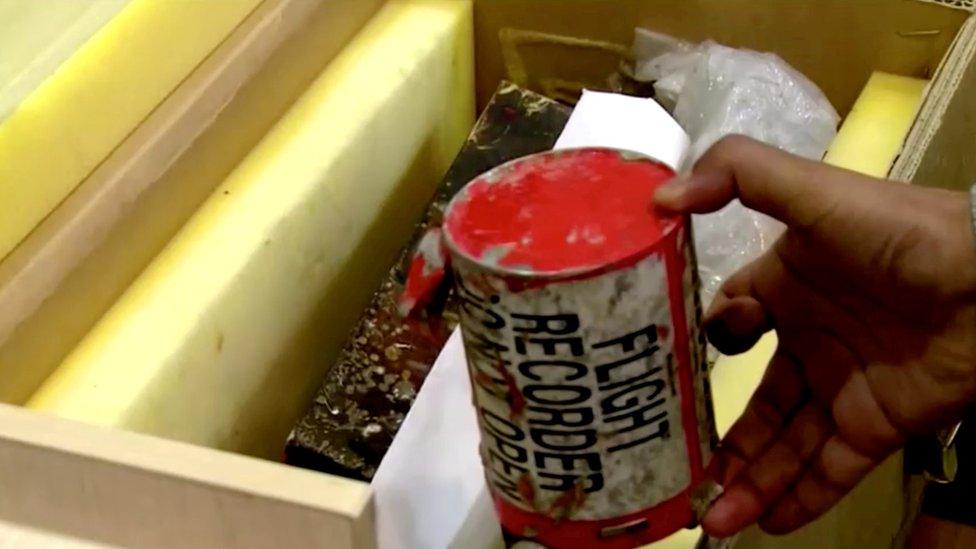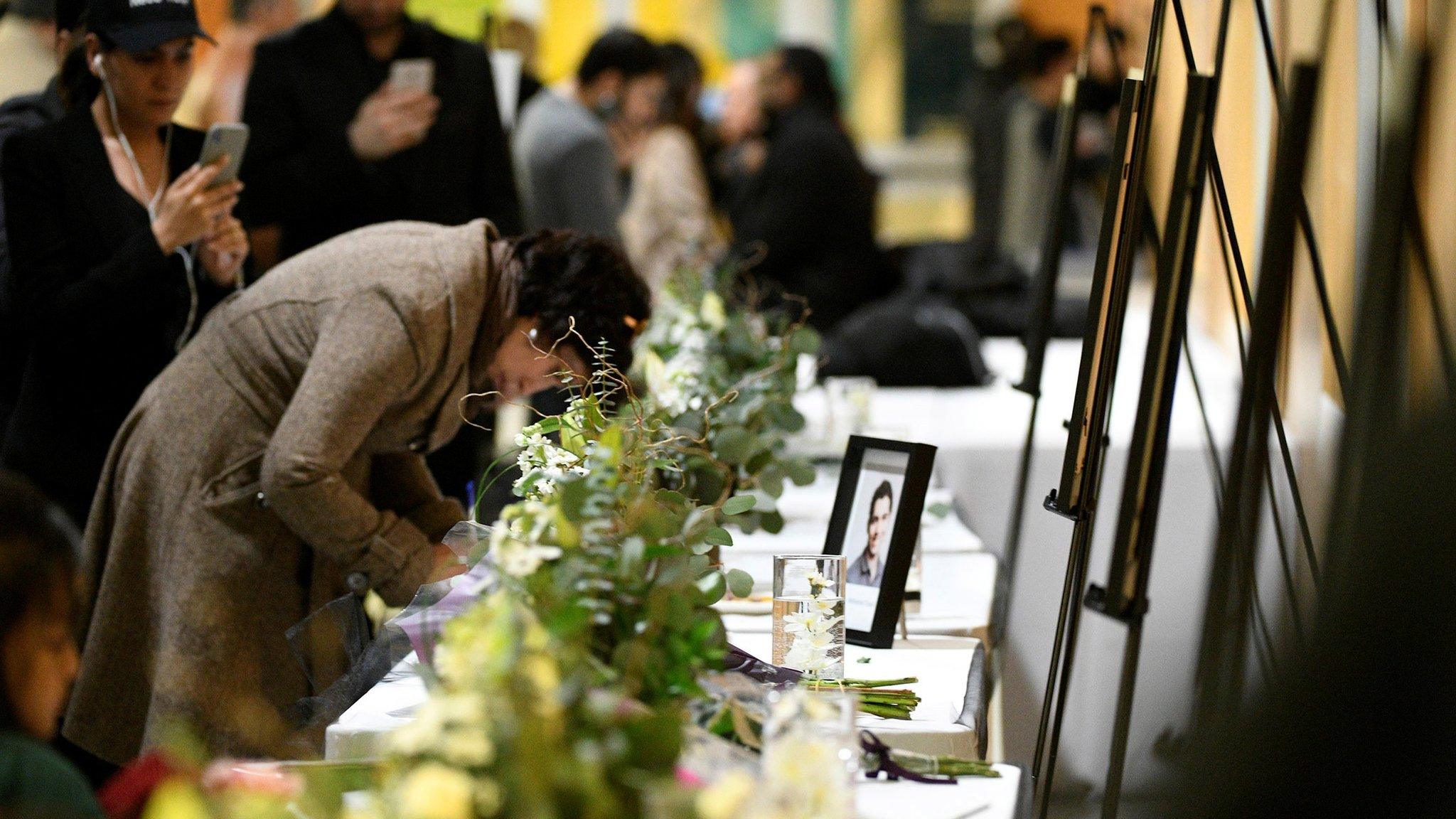Iran plane crash: Tor-M1 missiles fired at Ukraine jet
- Published

Iran's armed forces purchased the Tor-M1 missile systems from Russia
Iran has confirmed that two Tor-M1 surface-to-air missiles were fired at the Ukrainian airliner that crashed near Tehran earlier this month.
The Civil Aviation Organisation of Iran (CAOI) said the Russian-made missiles were launched from the north.
But it added that "the impact of these missiles" was still being assessed.
Iran's armed forces have said they fired at Ukraine International Airlines flight PS752 by mistake on 8 January, killing all 176 people on board.
For the first three days after the tragedy, they denied any responsibility and the CAOI suggested there had been a technical failure.

Ukraine and other countries want Iran to turn over the flight recorders
But as evidence mounted, the Revolutionary Guards' Aerospace Force said the operator of an air defence system had mistaken the Boeing 737-800 for a US cruise missile and fired at it.
Iran's air defences had been on high alert at the time because the country had just fired ballistic missiles at two US bases in Iraq in retaliation for the killing of top Iranian general Qasem Soleimani in a US drone strike in Baghdad.
What's the latest on Iran's investigation?
In its second preliminary report on flight PS752, the CAOI identified the surface-to-air missiles fired at flight PS752 as coming from a Tor-M1 system, which Nato calls the SA-15 "Gauntlet".
However, the report stopped short of blaming the missiles for the crash, saying "the impact of these missiles on the accident and the analysis of this action is under investigation".
Security camera footage circulated on social media had suggested that the plane was struck by two missiles within 23 seconds, shortly after taking off from Imam Khomeini International Airport.
Allow YouTube content?
This article contains content provided by Google YouTube. We ask for your permission before anything is loaded, as they may be using cookies and other technologies. You may want to read Google’s cookie policy, external and privacy policy, external before accepting. To view this content choose ‘accept and continue’.

Two unverified photographs purportedly taken near the crash site, also shared on social media, had meanwhile appeared to show the debris of an anti-aircraft missile.
The CAOI report also said Iranian investigators had found it "impossible" to read the plane's flight data and cockpit voice recorders - commonly known as the "black boxes" - because they were too advanced.


They therefore sent a request for the equipment required to France's BEA air accident investigation agency and the US National Transportation Safety Board (NTSB). However, neither had "so far responded positively", the CAOI added.
"If the appropriate supplies and equipment are provided, the information can be taken out and reconstructed in a short period of time," it noted.
The Boeing 737-800 was designed and built in the US, while the plane's engine was designed by CFM International, a French-American venture owned by Safran and General Electric.


What have other countries said?
In a telephone call on Sunday, representatives of Ukraine and four other countries which lost citizens in the tragedy - Canada, Sweden, Afghanistan and the UK - agreed Iran had been "co-operating with foreign experts in the investigation to date", external.
But they also emphasised that it was "imperative that Iran allow for a thorough and credible international safety investigation into the causes of the crash" and that it "assume full responsibility, including by providing compensation".
Pedram Mousavi, Mojgan Daneshmand, and their two daughters were all passengers on flight PS752
The five countries also called on Iran to "move the black boxes to a facility with all of the technology and expertise required to quickly and reliably download and analyse the data without delay", as prescribed by international conventions.
On Saturday, the head of the CAOI's accident investigations unit, Hassan Rezaeifar, was quoted by the semi-official Tasnim news agency as saying the black boxes would be sent to Ukraine. But the following day Mr Rezaeifar told the state news agency, Irna: "We have no plans to send them out."
Canadian Prime Minister Justin Trudeau told reporters in Winnipeg on Tuesday that Iran did not have the technological capacity or the expertise to analyse the black boxes properly.
"There has been broad consensus in the international community that France would be the right place to send those boxes, [and] we continue to pressure Iran to do just that," he said.
Mr Trudeau announced on Saturday that the Canadian government would give 25,000 Canadian dollars ($19,100; £14,700) to the families of the 57 victims who were Canadian citizens and the 29 others who were permanent residents to help with their immediate needs.
- Published16 January 2020

- Published13 January 2020

- Published9 January 2020
